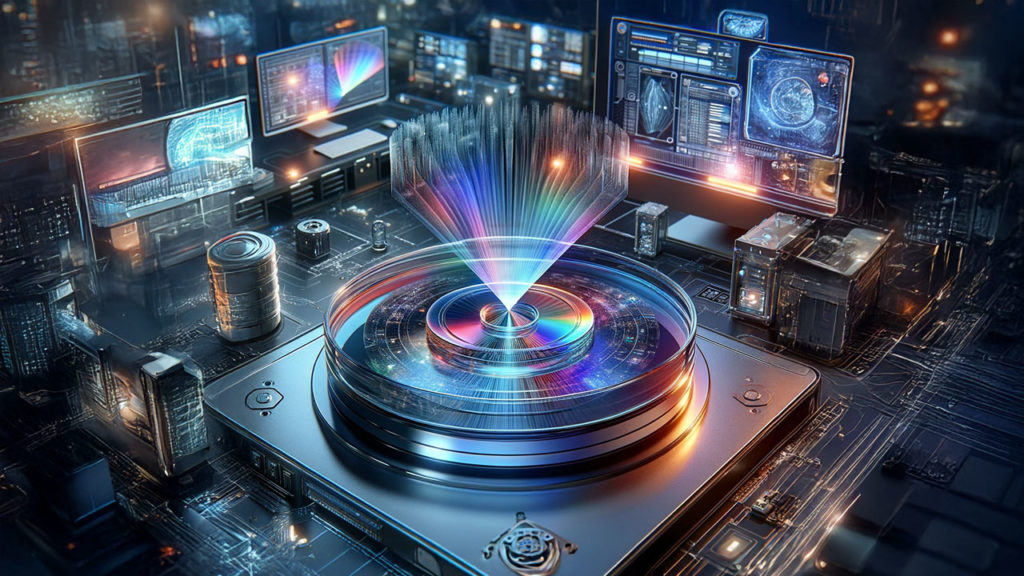Understanding Holograms: A Comprehensive Exploration

Introduction
Holography is a fascinating and complex field that merges physics, optics, and digital technology to create three-dimensional images known as holograms. Unlike traditional photography, which captures only the intensity of light, holography records both the intensity and phase of light waves, allowing for the reconstruction of a full three-dimensional image. This paper delves into the principles of holography, its history, technological advancements, applications, and future possibilities.
The Science Behind Holography
At the core of holography is the concept of interference and diffraction. When light waves interact, they can reinforce or cancel each other out, creating an interference pattern. In a holographic process, a laser beam is split into two: the object beam and the reference beam. The object beam illuminates the subject, and the light reflecting off the object interferes with the reference beam, forming a pattern that is recorded onto a photographic medium. When this pattern is later illuminated by a laser or another coherent light source, it reconstructs the three-dimensional image.
History of Holography
Holography was first theorized by Dennis Gabor in 1947 while working on improving electron microscopy. However, the technology required to implement his ideas was not yet available. It wasn’t until the development of the laser in the 1960s that practical holography became possible. Researchers such as Emmett Leith and Juris Upatnieks in the United States and Yuri Denisyuk in the Soviet Union refined and expanded the technology, paving the way for the modern applications we see today.
Types of Holograms
There are several types of holograms, each with unique properties and applications:
Transmission Holograms – Require a laser to reconstruct the image and are viewed by shining light through them.
Reflection Holograms – Can be viewed under white light and appear more like traditional photographs with depth.
Rainbow Holograms – Used for security features on credit cards and passports, these holograms provide a three-dimensional effect when tilted.
Digital Holograms – Created using computer-generated images, allowing for greater flexibility and integration into virtual and augmented reality systems.
How Holograms Are Created
The process of making a hologram involves several steps:
Laser Illumination – A coherent light source, typically a laser, is split into two beams.
Object and Reference Beams – One beam illuminates the object while the other serves as a reference.
Interference Pattern Recording – The interaction between the reflected object beam and reference beam is captured on a photosensitive medium.
Processing the Medium – The recorded interference pattern is developed and, when illuminated, reconstructs the three-dimensional image.
Applications of Holography
Holography has vast applications across multiple industries, including entertainment, security, medicine, and communication.
Entertainment and Media
Holographic concerts, such as posthumous performances by deceased artists like Tupac Shakur and Michael Jackson.
Augmented reality (AR) and virtual reality (VR) applications enhance gaming and film experiences.
Security and Authentication
Holographic security features on banknotes, passports, and credit cards to prevent counterfeiting.
Advanced biometric security utilizing 3D facial recognition.
Medical Imaging and Visualization
Holographic projections of internal organs for medical training and surgical planning.
Non-invasive diagnostic tools providing detailed, 3D imagery.
Communication and Data Storage
Holographic telepresence, allowing real-time, three-dimensional video calls.
Holographic data storage, which offers significantly higher capacity compared to traditional methods.
Recent Technological Advancements
Modern holography has benefited from advancements in artificial intelligence, nanotechnology, and computational imaging. Some of the latest breakthroughs include:
Holographic Displays: Companies are developing holographic televisions and smartphones capable of rendering 3D images without special glasses.
Real-time Holography: Improved processing power enables the creation and manipulation of holograms in real time.
Quantum Holography: Leveraging quantum mechanics to improve the resolution and fidelity of holographic images.
The Future of Holography
The future of holography is promising, with potential developments in various domains:
Education: Holographic lectures and simulations to enhance learning experiences.
Retail and Advertising: 3D holographic displays in stores providing interactive product demonstrations.
Space Exploration: NASA and other agencies exploring holography for deep-space communication and data analysis.
Biomedical Engineering: Personalized holographic diagnostics and tissue engineering applications.
Challenges and Limitations
Despite its potential, holography faces several challenges:
Cost: High production and implementation costs limit widespread adoption.
Power Consumption: Holographic displays require significant energy compared to traditional screens.
Storage and Processing Needs: Managing large amounts of holographic data remains a technical hurdle.
Holography represents one of the most exciting frontiers in imaging technology. From its theoretical foundations to its modern-day applications, it continues to revolutionize various industries. As technology progresses, the integration of holography into everyday life will likely become more common, transforming how we perceive and interact with visual information. The journey of holography is far from over, and the coming years promise groundbreaking advancements that will further blur the line between reality and illusion.
